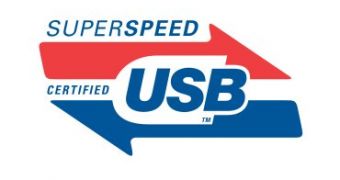No doubt all end-users have at least heard of the SuperSpeed USB 3.0 standard. This technology has a theoretical maximum throughput that is ten times higher than its predecessor's, USB 2.0. This obviously sparked great interest among hardware makers, which is why there already are a decent number of devices that integrate this interface. Nevertheless, native chipset support for USB 3.0 has still not arrived.
Controller chips are, even now, the only means by which a motherboard can be equipped with USB 3.0 ports. 2011 is the earliest one can expect to actually see native chipset support. When Intel and AMD do make this move, however, it is quite likely that sales of USB 3.0 components will boom. In fact, reports indicate that USB 2.0 sales will peak in 2011, at roughly 2.9 billion, after which they will decline as SuperSpeed evolves.
USB 3.0-based devices should also start decreasing in price. In fact, by the end of 2014, In-Stat predicts that the average selling price of SuperSpeed USB discrete peripheral controllers will see a compound annual growth of -21.8 percent. Conversely, the current market share of USB 2.0 (97%) will be completely taken away by the next-generation technology by the same time frame. All in all, the market should completely transition to USB 3.0 by 2014, with the laptop segment in the lead.
“In the past, new interface technologies were adopted more quickly in desktops. However, the landscape is shifting. Mobile PCs are omitting optical and large hard disk drives, which increases the need for faster interfaces to connect to external storage solutions. This makes SuperSpeed USB a higher priority in mobile PCs,” said Brian O’Rourke, In-Stat analyst.
USB 3.0 HDD sales should grow significantly by 2013, whereas SuperSpeed Flash drives will reach 225 million shipments in 2014. Finally, and interestingly enough, In-Stat actually believes that USB-connected monitors will see a CAGR of 107.5% from 2009 to 2014.

 14 DAY TRIAL //
14 DAY TRIAL //